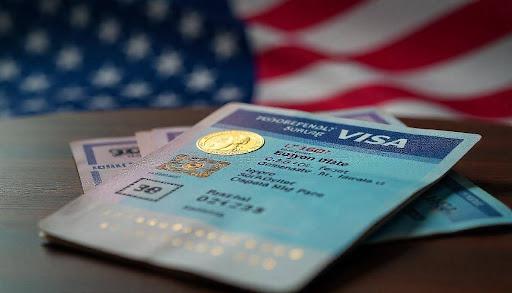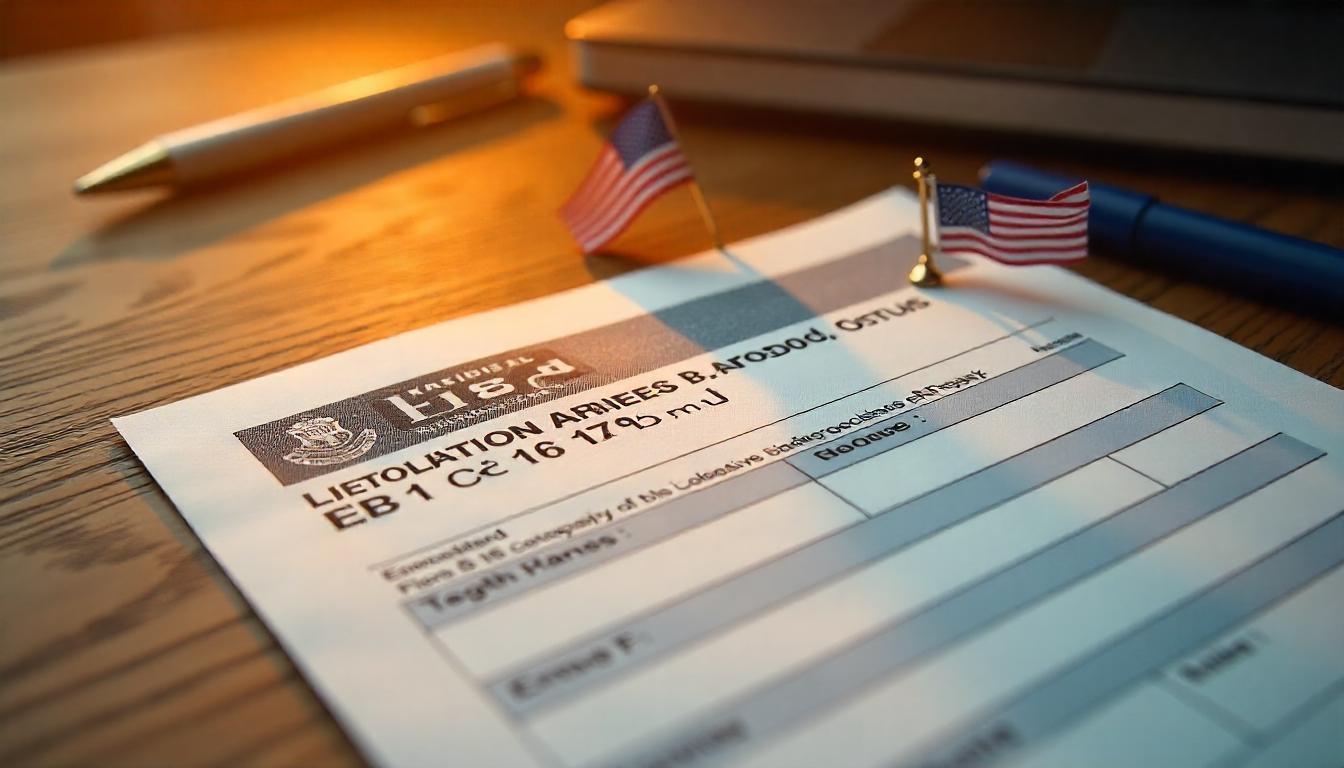Learn about us green card EB1 eligibility, detailed eligibility criteria for EB1 green card, and the EB1 green card application process. Discover who qualifies, including green card eligibility for H1B, and how to apply with expert guidance in 2025.

When you’re exploring U.S. green card EB1 eligibility, you’re looking at one of the most direct paths to permanent residency in the United States. EB1 is a first-preference employment-based green card designed for individuals who have excelled at the highest level in their field. It prioritizes people with extraordinary ability, outstanding academic contributions, or proven international corporate leadership.
Unlike most employment-based green cards, EB1 does not require labour certification, which eliminates months of waiting and significantly reduces delays. Whether you’re a globally recognized scientist, an award-winning artist, a researcher with impactful publications, or a corporate executive managing multinational teams, EB1 gives you an advantage over slower visa categories like EB2 or EB3.
If you’re wondering who is eligible for green card in USA through EB1 or how green card eligibility for H1B might lead you into this category, this guide explains every detail.
Exploring EB1 green card qualifications starts with understanding the three distinct EB1 subcategories—EB1‑A, EB1‑B, and EB1‑C. Each subcategory targets a specific professional profile, yet they all share one key advantage: faster processing and no labour certification requirements.
EB1‑A, also known as Extraordinary Ability, is for individuals who have achieved significant national or international acclaim in fields like science, business, arts, athletics, or education. This category is unique because it does not require a job offer, allowing you to self‑petition solely based on your achievements.
EB1‑B, known as Outstanding Professors and Researchers, is designed for academics and researchers who have made original and influential contributions in their fields. However, this category requires a permanent job offer from a U.S. institution.
EB1‑C, which applies to Multinational Executives and Managers, targets senior leaders who have held executive or managerial roles abroad for at least one year and are now transferring to a U.S. branch, subsidiary, or affiliate of the same company.
All three subcategories fall under EB1 green card eligibility, making this route accessible to a diverse range of professionals. If you want a clear assessment of which subcategory best aligns with your profile, Beyond Border can provide an individualized EB1 evaluation.
The U.S. green card EB1 eligibility requirements are strict because they are meant for individuals who demonstrate excellence beyond typical professional achievements. Let’s break it down more comprehensively by subcategory.
To qualify for EB1‑A, an applicant must demonstrate they are at the very top of their field, with sustained national or international acclaim. A job offer is not required, but you must provide extensive documentation of your accomplishments. You can qualify either by showing a one‑time major achievement such as a Nobel Prize or Olympic medal, or by meeting at least three out of ten criteria set by USCIS. These include receipt of national or international awards, published material about you or your work in major media, evidence of original contributions of major significance, membership in organizations that demand outstanding achievement, participation as a judge of others’ work in your field, leading or critical roles in distinguished organizations, or proof of high salary or significant earnings compared to others in your field.
Additionally, you must demonstrate that your work will substantially benefit the U.S. economy, culture, or education.
EB1‑B applicants must have at least three years of teaching or research experience and must also have an offer for a permanent academic or research position in the U.S. To qualify, you must meet at least two of the USCIS criteria, which include receipt of major academic or research awards, membership in prestigious organizations requiring outstanding achievements, published work in scholarly journals, citations or references to your work by others in the field, participation as a judge or reviewer of academic work, or holding key roles in distinguished research institutions.
This category is especially popular among PhD graduates, postdoctoral researchers, and H‑1B visa holders working in academia who are wondering who can apply for EB1 green card through the research route.
EB1‑C focuses on corporate leaders who are being transferred within multinational companies. To qualify, you must have worked for at least one continuous year within the last three years in a managerial or executive position outside the U.S. for a multinational employer. You must also be transferring to a U.S. office, subsidiary, affiliate, or branch in a similar managerial or executive role. Furthermore, it is necessary to prove that both the U.S. and foreign entities share a qualifying corporate relationship.
This pathway is ideal for senior managers, directors, and C‑level executives moving with their companies.
There are also special cases for H‑1B professionals. Many H‑1B visa holders strengthen their EB1 profile by publishing papers, filing patents, leading teams, or receiving industry awards—each step increases green card eligibility for H1B under either EB1‑A or EB1‑C. For official evidence guidelines, see the USCIS EB1 criteria.

The EB1‑C green card eligibility criteria is specifically designed for multinational executives and managers. For example, imagine you’re leading a major division of an overseas tech company. If your organization expands to the U.S. and wants you to head its U.S. operations, you could meet EB1‑C criteria. Since you have proven executive responsibilities abroad and will continue in a similar capacity in the U.S., you would qualify.
This pathway was created to help global companies transfer critical leadership talent without the delays associated with labour certification. If you’re asking who qualifies for EB1 visa under corporate leadership, EB1‑C is ideal for those maintaining strategic oversight across borders. If you’re unsure whether your experience fits EB1‑C, Beyond Border can evaluate your managerial history and guide you through the necessary eligibility proof.
The EB1 green card application process involves several key steps.
The first step is filing Form I‑140 (Immigrant Petition for Alien Worker) with evidence tailored to your subcategory. EB1‑A allows self‑petitioning, while EB1‑B and EB1‑C require employer sponsorship.
The second step is to consider Premium Processing. USCIS offers expedited 15‑day processing for many EB1 petitions. Learn more at USCIS Premium Processing.
The third step involves Adjustment of Status or Consular Processing. If you’re already in the U.S., you will file Form I‑485 to adjust status. If you’re abroad, you will complete consular processing. Detailed instructions can be found on the USCIS Form I‑485 guidance.
The final step is to receive your approval and green card. Once the I‑140 is approved and your priority date is current, USCIS or the National Visa Centre finalizes your permanent residency.
Yes, green card eligibility for H‑1B visa holders can transition into EB1 through two common routes. One pathway is EB1‑A, where you enhance your professional recognition through publications, patents, awards, and leadership roles in your industry. The other pathway is EB1‑C, where you move into a managerial or executive role with a multinational company and qualify under EB1‑C’s one‑year overseas employment rule.
For H‑1B visa holders, planning ahead is crucial. Building a strong evidence record while maintaining your current status will improve your eligibility. For a personalized transition plan, Beyond Border can guide you step by step.

Q: Can H‑1B holders apply for EB1‑A?
Yes, if you can show evidence of national or international recognition, such as publications, patents, or awards.
Q: How long does EB1 processing take in 2025?
Typically 6–12 months, with Premium Processing reducing I‑140 decisions to 15 calendar days.
Q: Do I need a job offer for EB1‑A?
No. EB1‑A allows self-petitioning. EB1‑B and EB1‑C require an employer sponsor.
Q: Can remote work in the U.S. count for EB1‑C?
No. The required one-year managerial or executive work must have been performed abroad for a qualifying multinational employer.
Q: Should I choose EB1‑A or EB1‑C?
It depends on your profile. EB1‑A is for individuals with extraordinary recognition; EB1‑C is for international executives and managers moving to a U.S. office.
If you meet us green card EB1 eligibility, EB1 remains the fastest and most strategic path to U.S. permanent residency. No labor certification, priority dates that are often current, and the ability to self-petition under EB1‑A make it the most flexible option for highly accomplished professionals.
Once approved, you gain the freedom to work without visa restrictions, eliminate H‑1B renewals, and unlock broader career opportunities in the U.S.
If you’re ready to move forward with EB1, Beyond Border can provide expert assessment and complete support for your petition.